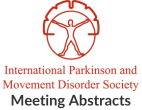Changes in Postural Control of Patients with Normal Pressure Hydrocephalus After Lumbar Puncture
Objective: To evaluate the alterations in postural control among patients diagnosed with normal pressure hydrocephalus (NPH) following lumbar puncture Background: Posturography is an indispensable tool…Body Mass Index as a Possible Poor Prognostic Factor in Motor and Postural Condition Through the Evaluation of MDS-UPDRS 3.3 – 3.18 in Patients with Parkinson’s.
Objective: To determine the degree of motor and postural impairment of patients with Parkinson's Disease at the time of their first consultation according to the…Postural Stability Relates to Autonomic Dysfunction in Parkinson’s Disease
Objective: To investigate the relationship between different domains of autonomic dysfunction and postural stability in PD patients. Background: Onset of autonomic symptoms are common in…Responders to a Highly Challenging Balance and Gait Intervention in People with Parkinson’s Disease
Objective: To characterize responsiveness to a highly challenging balance and gait intervention (HiBalance) in participants with Parkinson's disease (PD). Background: Exercise potentially improves gait, balance,…Exploring the Feasibility of Telerehabilitation for Balance Deficits in People with PD; the TelePD Trial
Objective: To evaluate the feasibility of adapting our Agility Boot Camp (ABC) for balance telerehabilitation (Tele-ABC) in people with mild-to-moderate Parkinson’s disease (PD). Background: Balance impairments…Virtual reality in patients with Hereditary Spastic Paraplegia
Objective: To assess the benefits of vestibular rehabilitation (VR) with virtual reality as a therapeutic tool in individuals with Hereditary Spastic Paraplegia (HSP), comparing two…Evaluating Fall Risk in People with Parkinson’s Disease Using a Novel Comprehensive Posturography Assessment
Objective: To determine if a comprehensive balance assessment on a posturography system can identify retrospective Fallers from Non-fallers in people with Parkinson’s disease (PwPD). We…The Effect of Subjective Postural Vertical on Forward Flexed Posture in Parkinson’s disease
Objective: The present study prospectively tested the effects of the subjective postural vertical on the exacerbation of the forward flexion of trunk (FFT) through long-term…A non-linear index can detect early postural instability in people with Parkinson’s disease: Enhancing perspectives on the utilization of cost-effective technologies.
Objective: To investigate the effectiveness of a non-linear index for identifying the decline in postural control associated with PD progression. Background: Postural instability is a…Three-Year Progression of the Postural Control Alterations in Hereditary Spastic Paraplegias
Objective: To assess the progression of postural control impairments in patients with HSP and identify the most sensitive COP parameter to change during a three-year…
- 1
- 2
- 3
- …
- 19
- Next Page »
